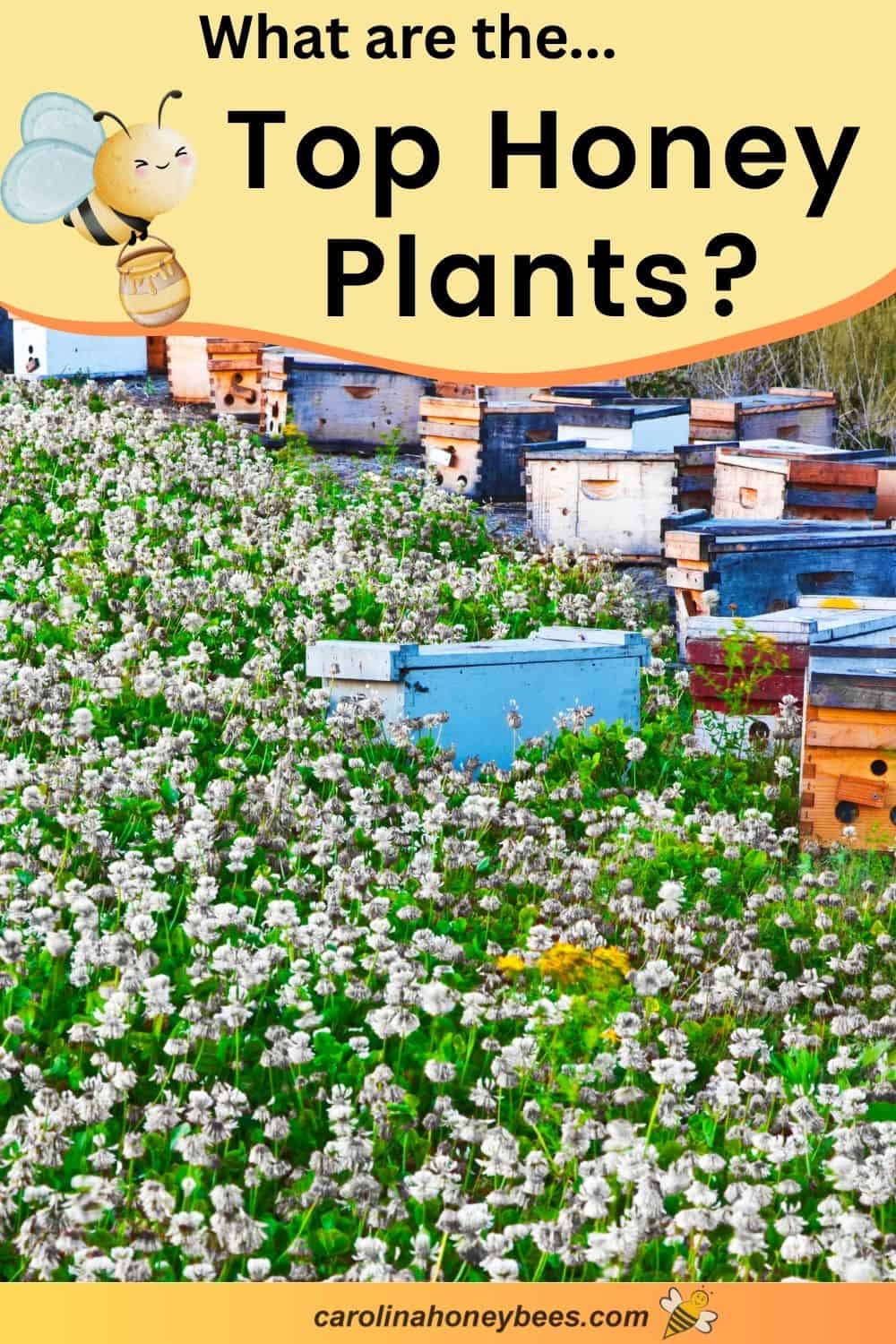Top Honey Plants
The quality and quantity of honey in a hive depends on the number of good honey plants in your area. While bees can and do collect nectar from a variety of sources, some flowers are just better suited for maximum honey production. Most of us are blessed with at least a few native nectar producers nearby. Whether you are a beekeeper or a gardener wanting to help pollinators, this guide will help you make good planting choices to add to your garden.

It is not uncommon for non-beekeepers to think that all blooms feed bees. This is not true. When we seek to plant or protect flowers for bees, it is best to provide an abundant and diverse source.
What Makes a Top Honey Plant?
In beekeeping terminology, the word honey plant refers to blooming plants that are Melliferous (meaning “yielding or producing honey”).
The copious amounts of nectar allow our bees to make honey in abundance when conditions are right.
Characteristics:
- nectar production – plants that produce large amounts of reliable nectar
- bloom time & duration – many flowers in bloom during the warm season and a long bloom period
- attractiveness to bees – some nectar is more attractive to bees than other
While nectar is key for honey production, bees also need pollen for protein. Some plants may not produce much nectar but still play a role in colony health by offering quality pollen.
Annuals and Perennials & Trees that Make Great Honey
Though they may not make a big impact alone, it is often a mix of plant types that contribute to honey production. Those that bloom in one season and those that come back year after year combine for a diverse diet.
Annuals
Annuals bloom (producing a lot of nectar) and make seed in one season. They do not come back next year. There are many to choose from. Some top contenders: borage, buckwheat and sunflowers.
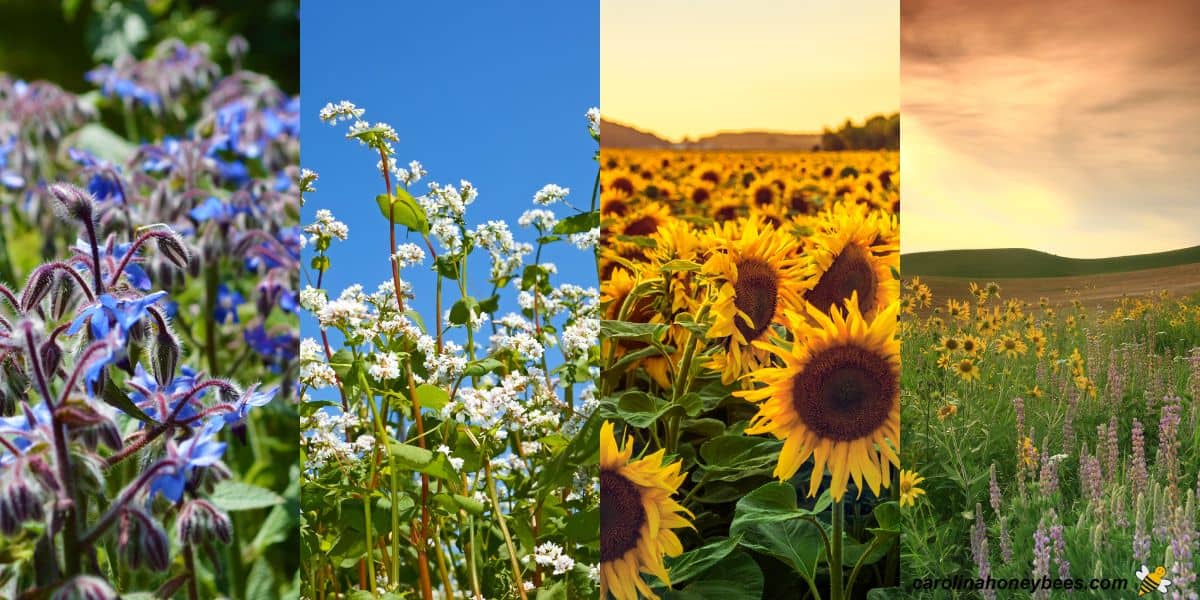
Borage (Borago officinalis)
Both Borage and Tansy (Phacelia tanacetifolia) are members of the Boraginaceae family. Both are very good sources of nectar for bees and may yield enough to produce a honey crop.
Their unique blue flowers are attractive to bees and offer a rich nectar source. Borage can be grown for bees in plots almost anywhere.
Tansy is native to the Southwestern US and often grown in the desert regions of California and surrounding areas.
Buckwheat (Fagopyrum esculentum)
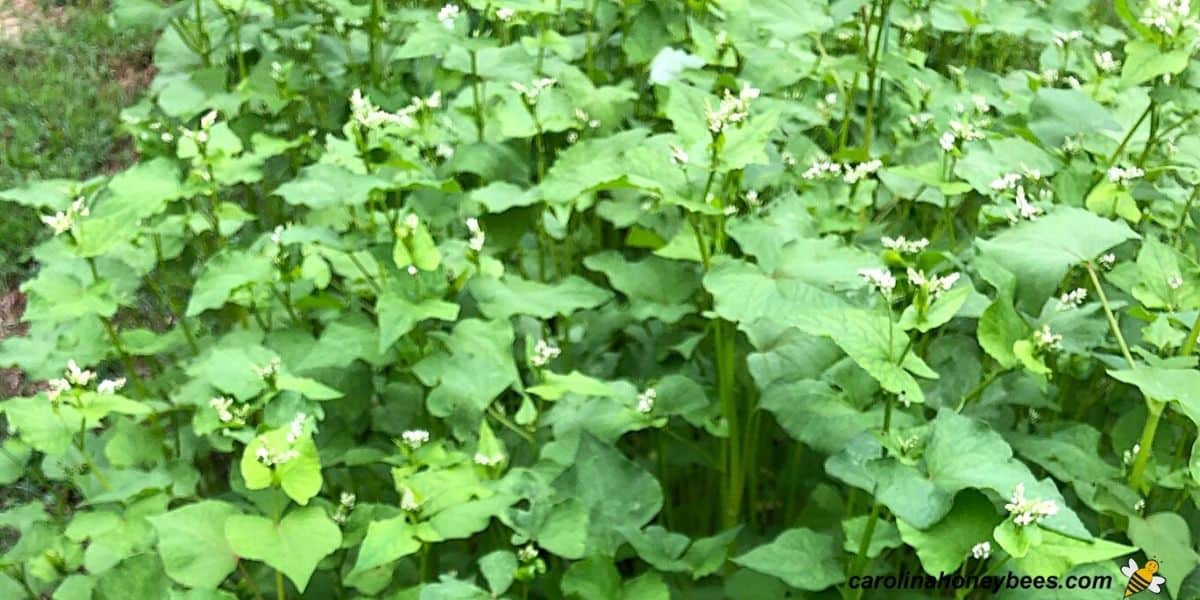
Buckwheat is not grown much commercially any longer. But, it is still used as a cover crop in some regions.
Bees love buckwheat flowers and beekeepers sometimes grow a bit to supplement late season nectar sources. I grow a small patch of buckwheat for bees at the end of Summer.
Honey made from this nectar is highly prized by some. It makes the top ten list for best honey in the world – even though it is quite strong and many beekeepers leave it for the bees.
Sunflowers (Helianthus spp.)
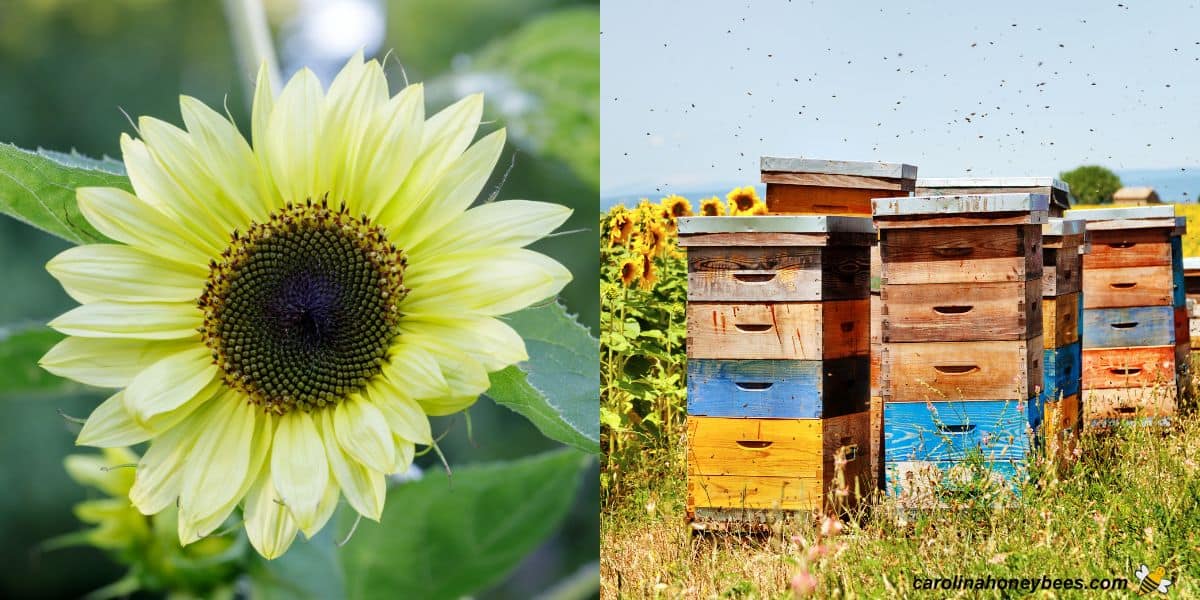
Sunflowers are can be a major plant for honey production. Grown in a commercial operation under the good conditions, they can have a honey yield from 30-100# per acre.
Growing sunflowers to boost your honey harvest is possible on a smaller scale too. Be sure to choose a type of sunflower that feeds bees – not all do.
Perennials
Perennials show up each year providing food for hungry bees. Not all are considered honey plants but some certainly qualify.
Remember we are not only considering which perennials are good for bees – but those that produce enough nectar to result in a honey crop to harvest!
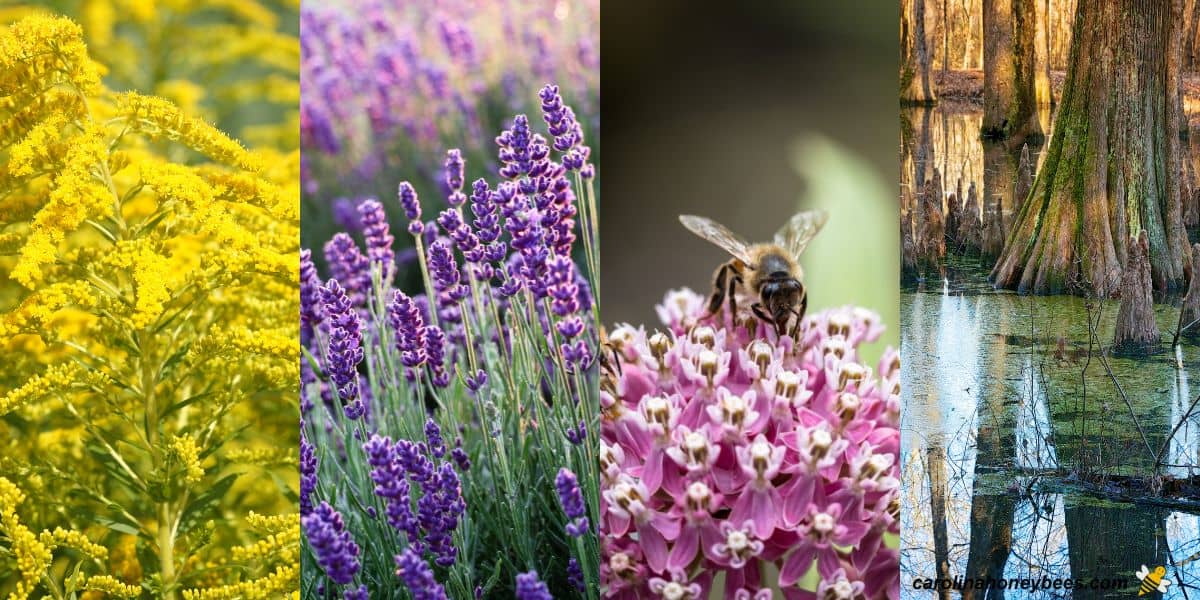
Goldenrod (Solidago spp.)
Goldenrods are a member of the genus “Solidago“. There are many varieties be sure to choose one that does well in your climate.
The most important thing about goldenrod for bees is the season of bloom. It’s end of season bloom is one of the last true food sources for most bees before Winter.
In some regions, goldenrod is a major honey plant. Not always a consumer favorite, the late season food source is beneficial to hungry colonies.
Lavender (Lavandula spp.)
Lavender is a bee friendly plant that produces a lot of nectar for honey production. The highly fragrant blossoms are very attractive to bees and some varieties have a long bloom season.
Bees love lavender but don’t expect to make a crop of lavender honey unless you have a large commercial field. Still, a few plants helps all the the delicious mix that becomes Wildflower Honey.
Milkweed (Apocynaceae spp.)
Milkweed boasts over 55 different species. Some are so melliferous that you can shake nectar from the plant. Milkweed is very beneficial to other pollinators too.
However, some varieties can be aggressive so keep that in mind when you choose a place to plant them. Common milkweed is known for being a little too happy in some locations.
To find the best suitable plants for your area – check the Xerces Society’s Regional Milkweed Guides.
Trees Can Produce A Honey Crop
Even small trees are large compared to a small flower. Those that produce large amounts of nectar can provide a full box of honey for a local beekeeper. And, the best trees for bees have a lot of blooms at one time.
Tupelo, Sourwood and Basswood trees are popular producers of variety types of honey. This “mostly” single source honeys are highly sought after. Yum, sourwood honey is a regional favorite in my area.
Top Honey Plants for Beekeepers
Commercial beekeepers depend on reliable nectar sources to maximize honey production. Some of these honey plants are crops with bring special challenges – such as protecting bees from pesticides.
Others provide ample nectar but are considered invasive in some regions. When you are choosing plants – always consider the impact of invasive plants that bees love – on the ecosystem.
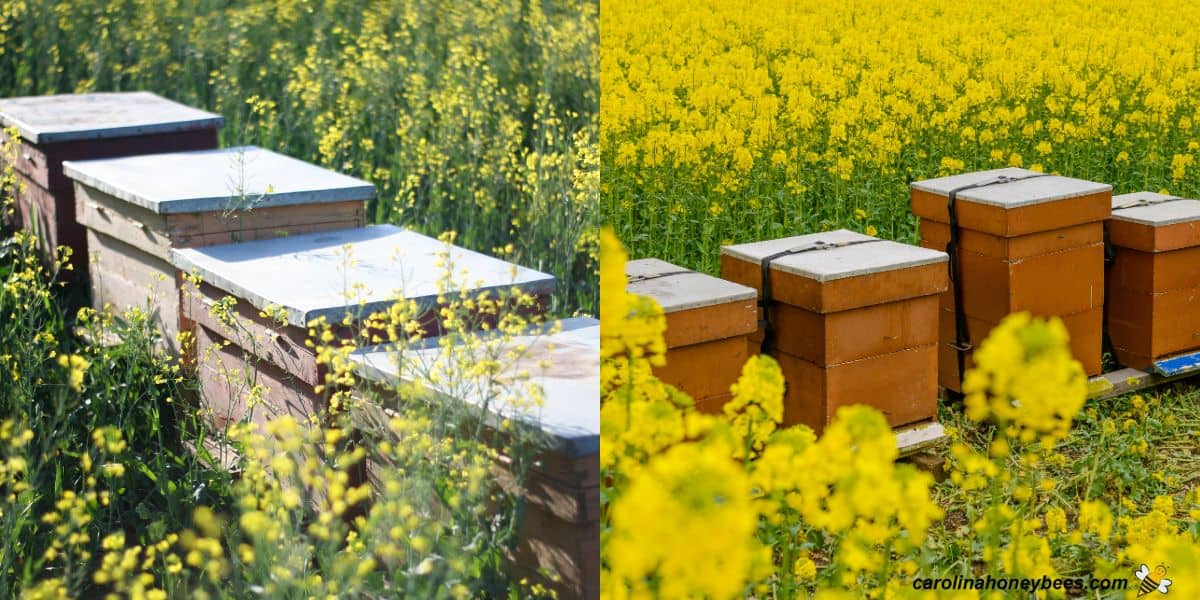
Canola (Brassica napus)
A major nectar source, canola (also called Rapeseed) makes use of bee pollination in many regions of the world including Canada. Pollination of canola is a major source of income for some commercial beekeepers.
On the downside, this honey crystallizes very quickly and can be a problem for beekeepers wanting to delay their harvest.
Also, the fact that most of the canola grown in the US is genetically modified is troubling to some.
Clover (Trifolium spp.)
Almost all types of clovers can be good plants for honey production. Soil and weather conditions affect the harvest but White Sweet Clover and Yellow Sweet Clover can yield around 200 # of honey per acre.
Even a small-scale beekeeper can supplement bee forage by having a small patch of clover in a nearby field.
Many kinds of clover attracts bees. In my region, bees dine on blooms of white clover that appear in the lawn over Summer.
Soybeans (Glycine max)
Soybeans are another major crop that is attractive to honey bees. These plants are mostly self-pollinating and do not rely on bee pollination.
But, some varieties produce nectar that is high in sugar content. So honey bees do forage in soybean fields. Pesticide exposure is a worry for migratory beekeepers.
Region & Climate Affect Plant Choices
Like most plants, growing conditions play a major role in nectar production. What is considered a honey plant in one region, may not be one in another – it may not even live.
Local climate, soil type, rainfall, and seasonal temperature patterns all play a big role in which nectar sources are available to bees.
When in doubt, native flowering plants adapted to your region are a safe and beneficial choice for bees and the broader ecosystem.
Popular Honey Plants by Region
- Southeast: Sourwood, Tulip Poplar, Gallberry
- Northeast: Clover, Goldenrod, Basswood
- Midwest: Alfalfa, Clover, Sunflowers
- Southwest: Mesquite, Tansy, Desert Wildflowers
- Pacific Northwest: Blackberry, Fireweed, Maple
Finally
What are the top plants for honey production? Well, that depends to a large degree on where you live. Connect with your local beekeeping association and learn which flowers are most highly regarded by beekeepers in your region. For me, the Tulip Poplar are always a major flow.

